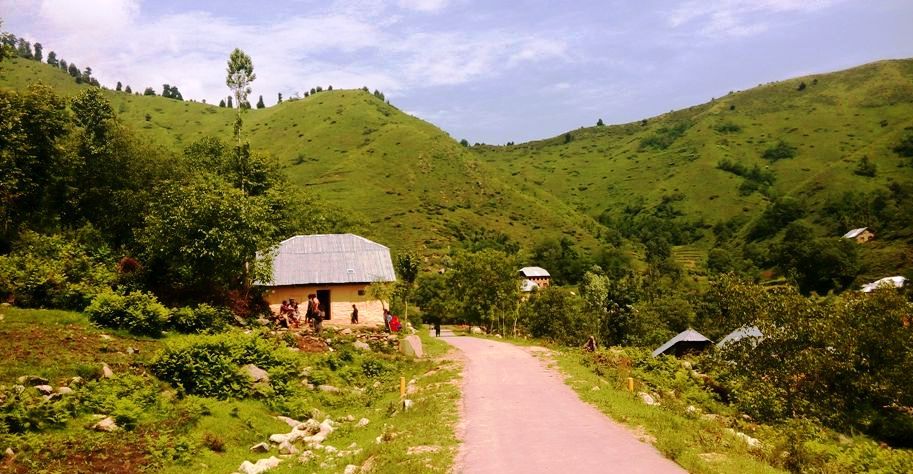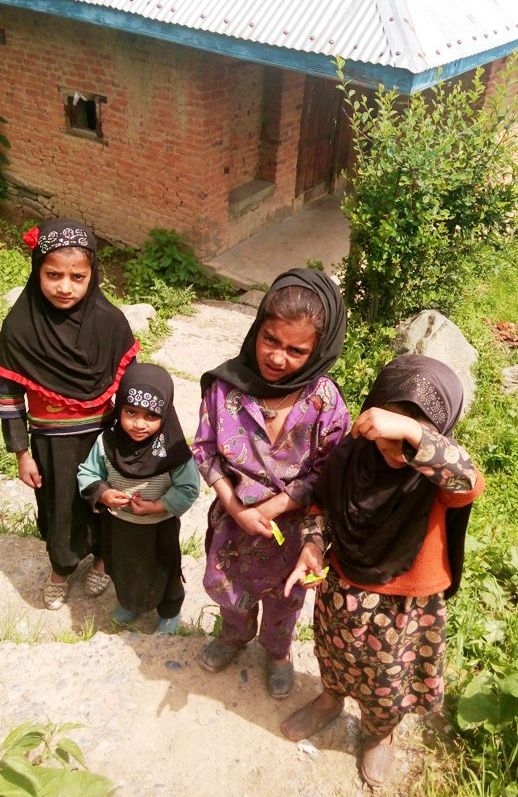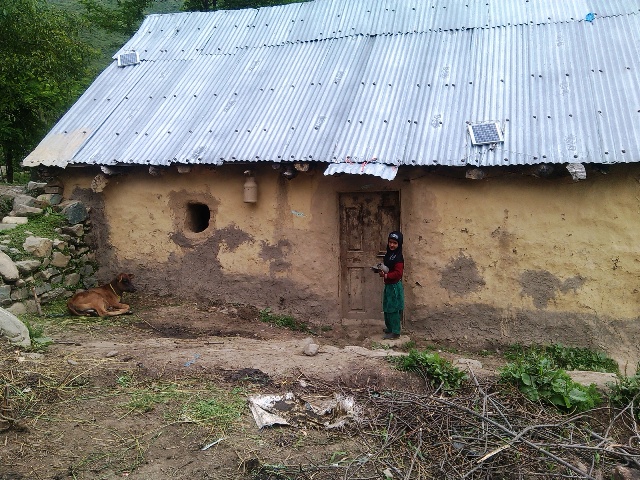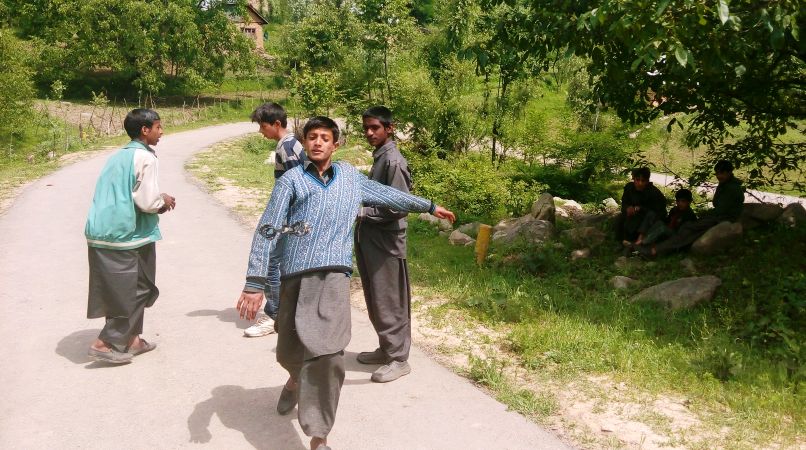Flattened by snow storm a decade ago, Waltengo Nar in South Kashmir’s Qazigund area is completely a different place now. The change has redefined the rural landscape. Riyaz Ul Khaliq visits Waltengo to report its revival

As train began chugging from Srinagar to South Kashmir, passing through farmlands, it threw a sleepy mode of Qazigund railway station out of gear. It was a weekend and sun was brilliantly shinning over this fringe southern part of Kashmir. I de-boarded the train and hired a taxi in Qazigund main market to reach the village flattened by snow storm a decade ago.
The taxi started moving on blacktopped stretch towards Kund, the area, 15kms from Qazigund, I was visiting. While inching closer to my stopover, it seemed as if I was travelling on Srinagar-Jammu highway—though gushing waters of Chenab were missing. Urban touch on rural housings and landscape made a curious sight, setting-off a sense of development, seeped in the area in the recent past.
 Nearly half-an-hour later, the driver pulled off at main market Kund wafted by a cool breeze and nestled in the backdrop of picturesque site. Kund didn’t appear a complete concrete monster—though, of course, a level of concretization could have been sliced out to spare its rural landscape. Locals said the area would have been declared a “heritage village” hadn’t 2005 snow storm flattening one complete village of Kund, triggering a massive concretization in the area.
Nearly half-an-hour later, the driver pulled off at main market Kund wafted by a cool breeze and nestled in the backdrop of picturesque site. Kund didn’t appear a complete concrete monster—though, of course, a level of concretization could have been sliced out to spare its rural landscape. Locals said the area would have been declared a “heritage village” hadn’t 2005 snow storm flattening one complete village of Kund, triggering a massive concretization in the area.
I shortly moved towards two Gujjar Bastis – Waltengo and Waltengo Nar, two among Kund’s 18 villages. These twin Gujjar villages of Devsar constituency, situated beyond a river, have earned a reputation to decide the fate of candidates in the run up to the state assembly elections. In the winter of 2014, locals said, the Gujjar villagers rallied behind Congressman Muhammad Amin Bhat, now Devsar’s lawmaker in 87-member state assembly.
But politics apart, memories of nature’s fury that flattened the upper Gujjar Basti of Waltengo Nar in mid-February 2005 were still afresh. Lapping into Pir Panjal peaks, scores of hutments housing poor herdsmen were strewn across the meadow in Waltengo Nar till a decade ago. Now, the picture has completely changed. A section of meadow is now dotted with mass graves housing 180 casualties of 2005 snow storm.
Locals narrated some chilling accounts, “All of a sudden, snow buried 180 villagers of Waltengo Nar. Only frozen corpses were taken out for the burial, mourned by none, as snow devoured the most and shocked the rest.” Almost all 116-householding of the village were in grip of the avalanche in 2005, cutting down the village population by one-third.
Some locals said that what hit them ten years back was a “fierce snow storm” than an avalanche. But whatever it was, it did send shivers down everyone’s spine. The state claimed to mobilise army from Gulmarg, Manali and Darjeeling on war-footing to carry out the rescue operations, but the locals hailed heroics of their brethren from adjacent villages.
After braving the nature’s fury, Waltengo Nar is presently populated by 1000 plus souls. Most of the villagers were busy cutting big logs. Near one hut, where woodcutters had assembled, I met an elderly man named Juma Khan, father of five, patriarch of fifteen.
In his frequently halting voice, Khan spoke about “trekking tourism” in Waltengo Nar, a parallel source of income for the villagers before snow storm shrouded it. “We (villagers) would arrange trekking for adventure loving people,” he said, running fingers in his hinna-dyed beard. “We would move them down the huge steep hills and show them the places.”
But once rebuilding flipped the village face, the living habits and old means of living too changed. “We have given it up now,” Khan said.
Though the villagers have given up escorting the tourists, but tourist footfall in Waltengo Nar is only mounting. And for this, the credit partly goes to metallic roads, diverting a huge tourist rush towards the village.

One bustling and emerging tourist spot in the village is of gurgling cold water spring called Wasaq Nag, situated at a base camp of Waltengo Nar. Keeping its tourism potential in view, the tourism department has done some ground work apparently to woo the tourists.
Amid the tourist bustle, change is noticeable. It took an entire painful season for snow to melt in 2005, but now the villagers wish that snow should stay on peaks and keep feeding Waltengo and its peripheries round the year. “Snow in mountains ensures regular water to our fields,” a local said. “More so,” he continued, “Wasaq Nag is water facility for Waltengo and Gujjars in Waltengo Nar use snow melt water.”
Besides tourism, a decadal shift has setup two schools, one Ration Ghat and a major bus stand in Waltengo Nar. But amid an urban facelift, the villagers haven’t distanced themselves from rural activities. Majority are still into farming, sowing paddy and growing apples.
However, in its present avatar, one can hardly reconcile with the fact that Waltengo Nar had its share in counter militancy operations too. A legend says that a militant was killed inside a hut by native Gujjars by an axe! “Huge battalions of army would move into the hills,” said Farooq Ahmad, a local, pointing towards the track army would routinely tread. “Many operations were conducted inside the deep jungles.”
But the moment dusk fell over Waltengo Nar, all its ‘bloody’ legends and ‘stormy’ nightmares seemed to seep under obscurity. A strange scene ensued where one could apparently sense: the village’s bustling present has an edge over its ‘flattened’ past. Indeed, Waltengo Nar has moved on and come a long way.
















